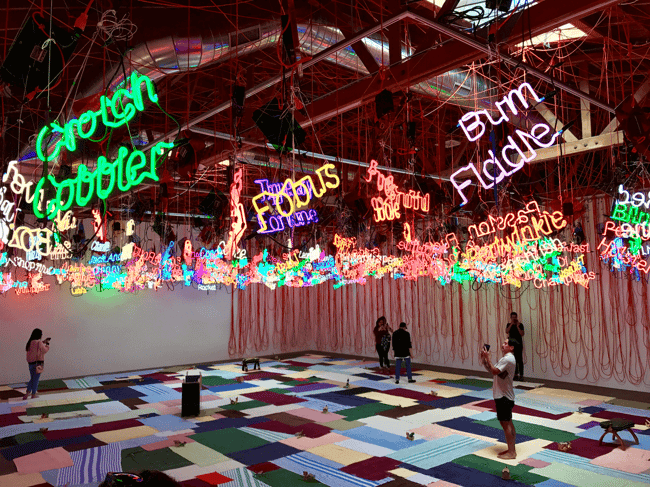What do shoppers value and want from retail stores?

Subscribe to our newsletter
We now value the worth of something by how picture-ready it is. I got caught up in it myself while staying in Los Angeles recently.
A trendy new ice cream shop beside my hotel was known for its bouquet of ice cream cones.
I had to see what that was.
Nine small scoops of ice cream in a waffle cone for $9.
But it wasn’t the ice cream - which was fine, I mean, it’s ice cream – it was the presentation.
After people waited in line for 15 or more minutes and received their order, the first thing they did was snap a picture of it to post on social media.

I went to an art museum. People weren’t considering the art as much as how they could be photographed engaging with it.

We are all scavengers for content for our social media feeds and our lives.
Many of us used to define ourselves by what we purchased. The best, the new, the trendy. And for me, that is still true, but now we define ourselves even more by what we experience.
Part of the challenge of retail right now is how do you make something like a beige sweater great social media content?
Because if people can’t take a photo of it, what good is it?
And if the retail store days of packing it high and hoping it flies are done…
What comes next?
The social interaction, the sharing of experiences, the emotional sale - community.
As Allie Middleton asked in a comment on a previous blog, “For the sake of what are we really gathering here, in this place, at this time? What are we really looking for?” She agrees the answer is heartfelt community.
But if the going-to-the-store experience is really about community now, then how do you build community in a store?
You have to find a way to hire, train, and reward your employees at a high enough level to open their hearts to another human being and share in that connection.
I can hear some of you groaning…Bob, we’re just trying to sell toasters. We’re not trying to change the world.
Well, maybe you should be.
The days of warehousing products so you can get a cut of the profit are dwindling. Many large manufacturers are skipping the middleman and going straight to consumers.
If you have a brick-and-mortar location, you have to provide something else. I would posit a sense of community.
That starts with a detailed customer service experience you use retail sales training to deliver on repeatedly. That’s why I created SalesRX.com to help you.
That’s because...
The old price and promotion levers just aren’t working.
Now if you know anything about me, you know I think discounting is just about the worst thing you can do – unless it is to your loyal customers who made you successful.
But that doesn’t stop companies from surveying people to get validation that consumers just want lower prices and more discounting…
According to a survey from First Insight, more than half of American women — 45 percent — won’t even enter a store unless there’s a markdown of 41 percent or more.
They also found, on average, in shopper behavior across all womenswear categories tested consumers were willing to pay only 76 percent of the full price.
That means the entry point for them buying from you is 24% off all the time.
And just because they say that doesn’t mean you should give it to them.
Maybe that’s why Market Watch recently reported, “Spending in the footwear category has fallen 1%, with fashion shoes tumbling 6%. Fashion accessories sales lost 7%, and handbags alone tanked more than $1 billion in that 12-month span. Those declines came even as Millennials increased their buying in those categories.”
One good note from the First Insight survey was that “manufacturers must evaluate which features of the product shoppers are willing to spend on and play up those features.”
To that, I say Amen. But it isn’t the manufacturer’s role – you need a salesperson.
Selling gets the merchandise out the door – not lowering your prices...and margins.
But that doesn’t seem to keep pundits from making bone-headed recommendations.
I read an article on retail tips - eight ways to use discounting to get customers to your store. Listed below are two of their worst tips:
Offer fewer but bigger discounts. Most retailers are already discounting too often and too much with no discrimination between items that would sell on their own and the dogs. Making the cuts deeper means you have to sell many more of them just to break even.
Discount brand name products. Unless you’re Wal-Mart or Amazon, you pay significantly more for name brands. Discounting them destroys the reason you carry them - so you look like you have a full range of products. Sure, consumers would love a big discount on LEGO from you, but LEGO doesn’t discount you, so you are paying top dollar just to carry their product.
If all you can do is discount your products or not charge enough to be profitable, you’re a hobby going down the tubes...and not a business.
A smart retail business knows the only way you can compete is by knowing your overall margins and controlling the experience within your four walls.
In fact, a WD Partners survey found that while consumers were increasingly utilizing digital and in-store technologies and tools like buy online pickup in store (BOPIS) and peer ratings and reviews and that they like personalized communications, retailers also learned that all of those shiny objects mean very little if the overall shopping experience is lacking.
See also, 6 Ways How Retailers Can Increase Their Conversion Rates
In Sum
If you walked up to your store tomorrow morning and found your front window had a huge crack in it, you would drop everything and call somebody to fix it, pronto.
You could see how such a thing could tarnish your reputation, the signal it would send to your shoppers how little you cared about your store...let alone the security problems.
I have news for you. Retail customer service is beyond cracked.
Yet almost every retailer I ask will say their unique selling point is customer service.
Stores are closing at a record pace partly because retail was overbuilt over the past several generations and partly due to online shopping habits. However, don’t ignore the third reason: it’s just not fun or rewarding to go shopping in 90% of stores.
In fact, shoppers are tired of no service or bad service...
They’re tired of meeting bored and disinterested employees.
They’re tired of encountering product knowledge specialists who are more concerned with the reams of facts they know about their products than how to distill that into something shoppers find a compelling reason to buy from them.
In short, they’re tired.
They want to be valued as people, as members of your community, and as customers.
And no discount or selfie will make up for that.



